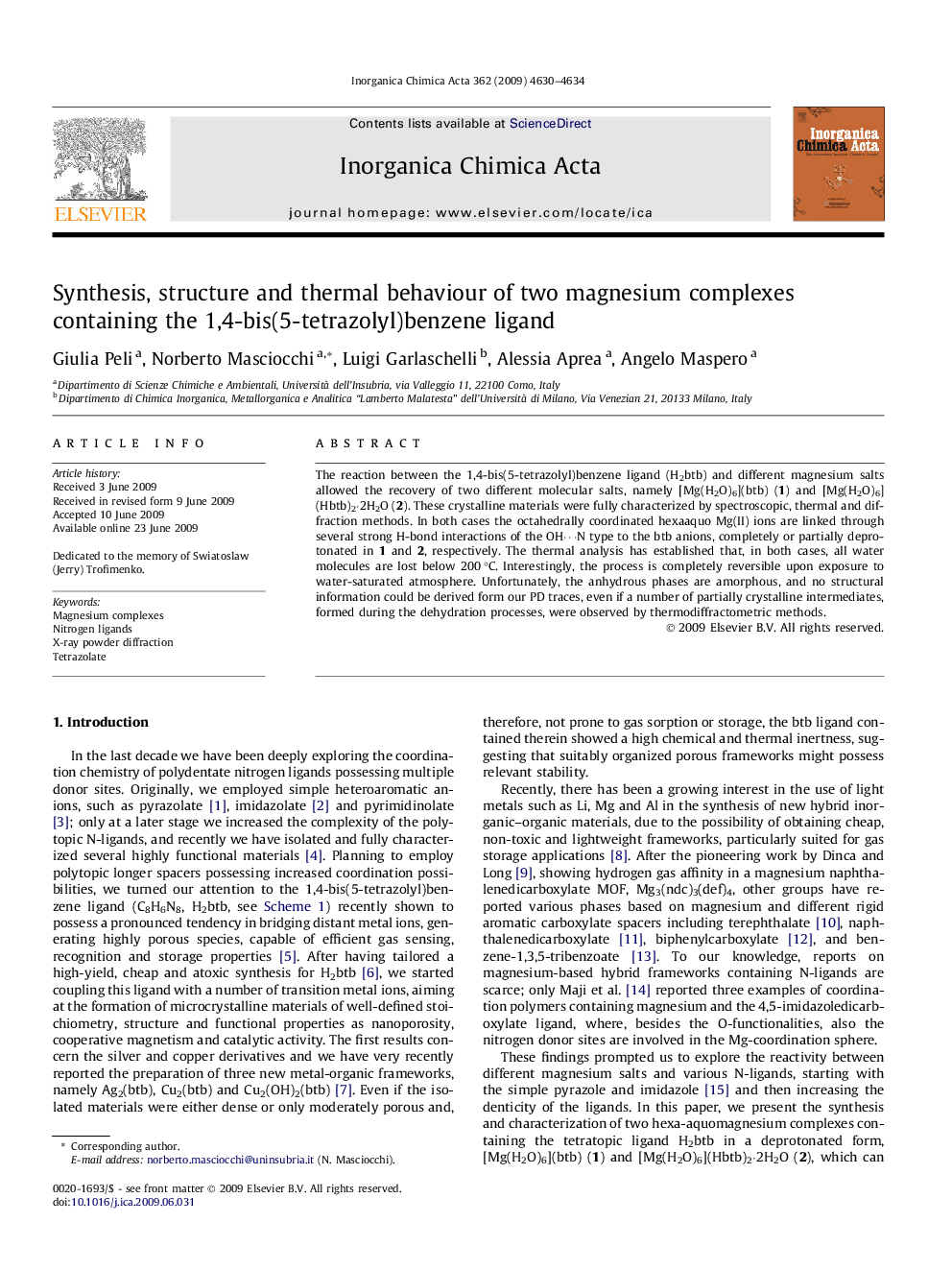| Article ID | Journal | Published Year | Pages | File Type |
|---|---|---|---|---|
| 1309586 | Inorganica Chimica Acta | 2009 | 5 Pages |
The reaction between the 1,4-bis(5-tetrazolyl)benzene ligand (H2btb) and different magnesium salts allowed the recovery of two different molecular salts, namely [Mg(H2O)6](btb) (1) and [Mg(H2O)6](Hbtb)2·2H2O (2). These crystalline materials were fully characterized by spectroscopic, thermal and diffraction methods. In both cases the octahedrally coordinated hexaaquo Mg(II) ions are linked through several strong H-bond interactions of the OH⋯N type to the btb anions, completely or partially deprotonated in 1 and 2, respectively. The thermal analysis has established that, in both cases, all water molecules are lost below 200 °C. Interestingly, the process is completely reversible upon exposure to water-saturated atmosphere. Unfortunately, the anhydrous phases are amorphous, and no structural information could be derived form our PD traces, even if a number of partially crystalline intermediates, formed during the dehydration processes, were observed by thermodiffractometric methods.
Graphical abstractTwo hexaaquomagnesium salts of the 1,4-bis-(5-tetrazolyl)benzene ligand afford, upon heating, partially, or fully, dehydrated polycrystalline or amorphous phases, depending on the extent of the thermal treatment. These transformations are 100% reversible and have been studied by thermodiffractometric methodsFigure optionsDownload full-size imageDownload as PowerPoint slide
